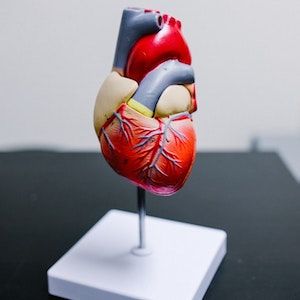Article
Risk of Cardiovascular Death Increases With Aortic Stenosis Severity
Author(s):
Data show the 20-year cumulative incidence of AVR was 3.4% in mild AS, 20.2% in moderate AS, and 54.6% in severe AS.

Although the clinical significance of severe aortic stenosis (AS) is known, most modern data on incidence and death of patients with AS has come from tertiary centers and specialized studies on aortic valve replacement (AVR).
In a recent study, a team of investigators, led by Augustin Coisne, MD, Heart Valve Clinic, Institut Coeur Poumon, aimed to provide new insight into the natural history of outpatients with native AS, as well as incidence of death in those presenting with native valvular AS.
Results from the study showed patients with moderate AS had a higher risk of cardiovascular death compared to patients with mild AS, but overall showed much lower risk than patients with severe AS, which remained after adjustment for baseline characteristics.
Methods
The multi-center VALVENOR study enrolled outpatients (n = 2830) with native valvular AS between May 2016 - December 2017.
Additionally, patients with peak aortic jet velocity of 2.5 m/s or greater on transthoracic echocardiography (TTE) were prospectively included by 117 cardiologists in the Nord-Pas-de-Calais region of France during outpatient visits.
The diagnostic criteria categorized patients with mild AS (peak aortic jet velocity, 2.5 - 2.9 m/s), moderate AS (peak aortic jet velocity, 3 - 3.9 m/s), and severe AS (peak aortic jet velocity, ≥4 m/s).
A total of 2703 patients completed follow-up, including the survival of patients with AS with both cardiovascular and noncardiovascular causes of death observed. The study analysis occurred between August - November 2020.
Investigators identified outcomes as natural history, the need for AVR, and survival of patients with AS during follow-up.
Findings
Out of the 2703 patients who completed follow-up, 233 (8.6%) were recruited from a public university hospital, 757 (28%) recruited in non-university public hospitals, and 1713 (63.4%) by cardiologists in private practices.
Then, during study inclusion, 1154 patients (42.7%) had mild AS, while 1122 (41.5%) had moderate AS and 427 (15.8%) had severe AS. The team further noted an overall elderly population (mean age, 76.0 years) with high prevalence of risk factors and underlying cardiovascular diseases.
Over a median follow-up period of 2.1 years, data show 448 deaths and 634 patients undergoing AVR.
Additionally, data show the 20-year cumulative incidence of AVR was 3.4% (95% CI, 2.5 - 4.6) in patients with mild AS, 20.2% (95% CI, 17.9 - 22.7) in patients with moderate AS, and 54.6% (95% CI, 49.7 - 59.2) in patients with severe AS.
In determining cause of death, investigators observed cardiovascular deaths were most frequent (200, 44.7%), mainly associated with congestive heart failure (101, 22.6%) or sudden death (60, 13.4%). There were noncardiovascular deaths in 186 patients (41.5%) and unknown causes in 62 patients (13.8%).
Further, when comparing severity of AS, increased cardiovascular mortality was observed in moderate AS (hazard ratio, 1.47; 95% CI, 1.07 - 2.02) and severe AS (hazard ratio, 3.66; 95% CI, 2.52 - 5.31), compared to mild AS.
After adjustment for baseline characteristics, similar results were observed for all-cause and cardiovascular mortality.
Similarly, in asymptomatic patients, both moderate and mild AS had associations with similar cardiovascular mortality (HR, 0.99; 95%CI, 0.44 - 2.21).
Takeaways
“Our data demonstrate that the principal causes of cardiovascular mortality, HF, and sudden death have a proportional graduation with increasing AS severity,” investigators wrote.
The study, “Association of Mortality With Aortic Stenosis Severity in Outpatients,” was published online in JAMA Cardiology.



